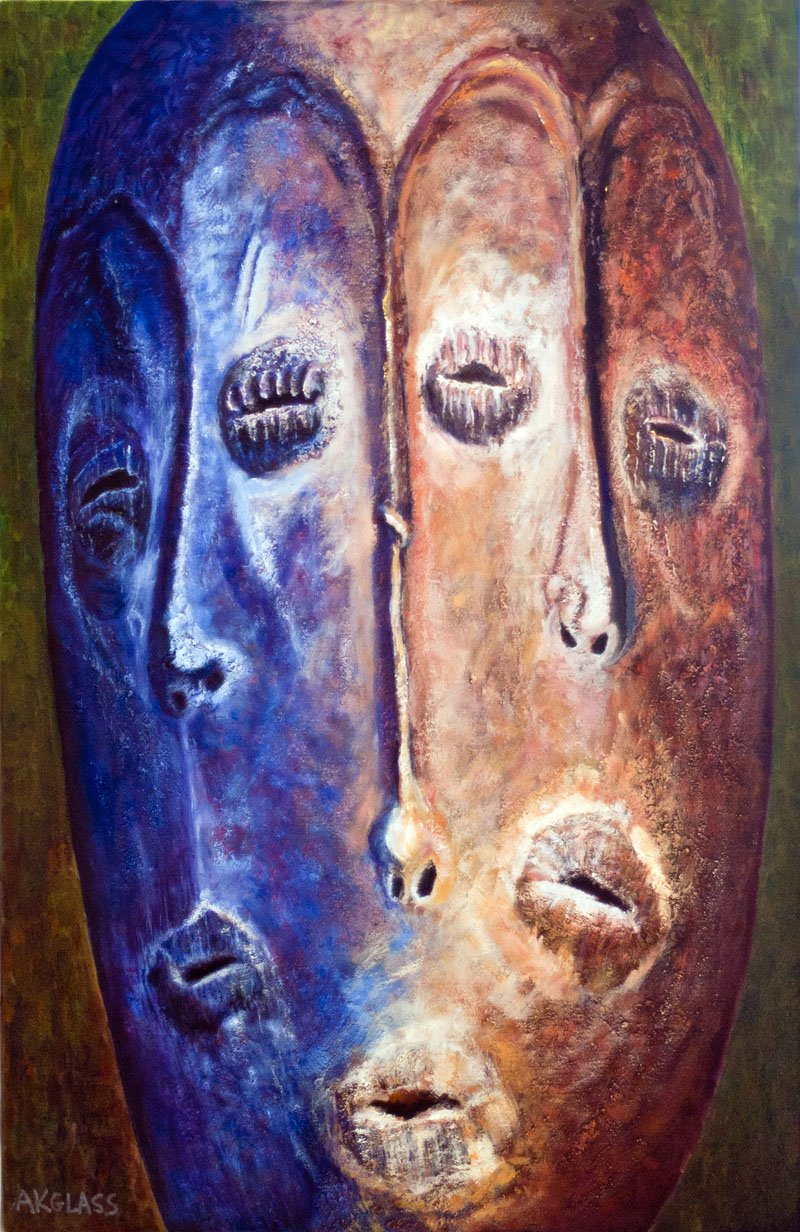 Image 1 of 1
Image 1 of 1


Bwami Three Faces
Painting of an African Mask
Unframed Original Mixed Media & Oil on Canvas
40" x 26"
Lega People, Democratic Republic of Congo
Bwami masks and figures are symbols of the owner's rank within the Bwami society. The objects represent moral or social values and are used during initiation rites. The Bwami works of art are often associated with proverbs, and these proverbs, in conjunction with dance, poetry, and song, give wisdom to members of the society. Beauty, knowledge, and power are intertwined.
Some artwork can only be seen, handled, or owned by members of the highest stations of the society. The objects are typically small and simple in form, and have a striking patina that derives from being handled or worn on the body. The masks are fairly standardized, although the most important masks with special ritual use or symbolic meaning may have distinctive designs. A typical mask will have a concave heart-shaped face. The forehead protrudes slightly, the nose is narrow, eyes are slits, and the mouth is slightly open. Every time a mask is used it is rubbed with white clay, over time acquiring a white patina.
One in a series of eleven paintings inspired by tribal African masks from museum or private collections. The mask was in use during the 19th and early 20th centuries.
Painting of an African Mask
Unframed Original Mixed Media & Oil on Canvas
40" x 26"
Lega People, Democratic Republic of Congo
Bwami masks and figures are symbols of the owner's rank within the Bwami society. The objects represent moral or social values and are used during initiation rites. The Bwami works of art are often associated with proverbs, and these proverbs, in conjunction with dance, poetry, and song, give wisdom to members of the society. Beauty, knowledge, and power are intertwined.
Some artwork can only be seen, handled, or owned by members of the highest stations of the society. The objects are typically small and simple in form, and have a striking patina that derives from being handled or worn on the body. The masks are fairly standardized, although the most important masks with special ritual use or symbolic meaning may have distinctive designs. A typical mask will have a concave heart-shaped face. The forehead protrudes slightly, the nose is narrow, eyes are slits, and the mouth is slightly open. Every time a mask is used it is rubbed with white clay, over time acquiring a white patina.
One in a series of eleven paintings inspired by tribal African masks from museum or private collections. The mask was in use during the 19th and early 20th centuries.
